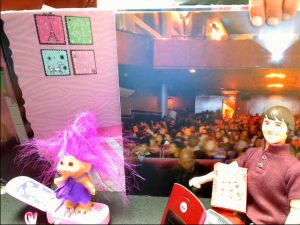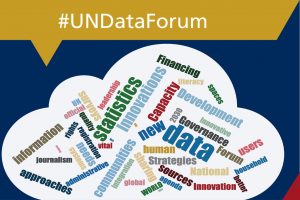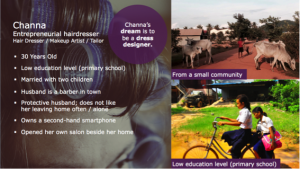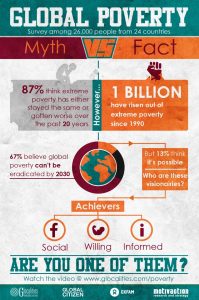Overview
In 2007 the Family Violence Prevention Fund partnered with the Ad Council and R/GA to create a campaign to prevent teen dating violence both now and as teens mature and enter adulthood. Our initial research found that teen dating had gone digital and teen dating abuse online had followed. This emerging area became our focus.
Research was conducted at key points of the year-long development process. Because we wanted to understand how teens interact with each other in a digital environment, we created that environment and then brought respondents in to interact with it. At every point in the research process, respondents created artifacts—words, pictures and ideas—that did not just inform the subsequent campaign, but literally became part of the campaign.
In early 2009, the ThatsNotCool.com site and multimedia campaign was launched to draw teens’ attention to the issue of digital dating violence and to help them “draw their digital line” by deciding for themselves what’s right or wrong rather than be lectured by adults.
The campaign included banners, social media, TV, print, radio, outdoors and a mobile site. At the ThatsNotCool.com website teens could view content, as well as create and share videos, call out cards and more. The campaign helped start a conversation in the media on teen dating abuse and in the first few months led to over 300,000 visitors, 200,000 video views and 28,000 call out cards sent.
Please take a look at this short video to learn more about the challenge, the research, development of the campaign and to see the creative in action. https://www.youtube.com/watch?v=eY4BhzuOeSQ
Research Phase I (2007 – 2008)
First we reviewed existing academic and secondary research. Next we needed qualitative research to get a deeper, more nuanced and current understanding of the situation – including teens’ social norms, and vernacular. And we needed nationwide input on a tight timeline.
Abby Leafe head of New Leafe Research partnered with Judith Oppenheim, research director at RGA, and the team in developing innovative research methodologies to meet budget, timing and diversity constraints; leverage new digital research opportunities; and create an environment where teens would be comfortable participating and being open. Ben Smithee head of The Smithee Group conducted the male friendship groups.
- Online Immersion: This phase explored the language, attitudes and behaviors of teens regarding dating. For a week, they recorded their lives and experiences in words and photos on their own ‘blog’ created for this research. This included structured activities and open-ended forums.

Figure 1: Teen blogging interface
- In-home friendship circles (14 in 3 cities): The next phase built upon these learnings using friendship circle discussions conducted in the home of a host teen who recruited same sex friends. The first step was getting the host parent’s permission. We included structured discussion and loosely directed conversation about their dating life and language.

Figure 2: Portion of Language Dictionary which emerged from early qualitative
Next we held creative development work sessions with creative teams and teens.
- Creative development workshops: We had 5 same-sex friendship groups of 3-6 teens per group. It was important to ensure authenticity and excitement in the campaign experience, language, and look and feel. We had a mixture of exercises such as word sorts, word mapping, and sketching, as well as exposure to work-in-progress concept stimuli.
With the input from the creativity workshops, R/GA developed a revised set of concepts for exploration with a new set of teens.
- Concept evaluation groups: Friendship circles evaluated the creative overall as well as specific components.
- Concept review: Feedback on campaign elements, including mobile, out-of-home, print, TV, radio, and web site.
- Creation stations: The concept for the campaign web site included a host of interactive tools, including a fairly robust video creation application, an interactive quiz and an ‘i-card’ creator. The room was set up as a ‘laboratory’ with two distinct “creation stations” where respondents were asked to try the tools, and specifically to create their own video in responses to the creative elements they previewed during the focus group. Respondents were provided with a host of everyday props to use to create their videos, including, dolls, toys, puppets and so on.

Figure 3: Content created by respondents with group stimuli
Phase 2 (2009)
A second phase of research was conducted to provide guidance on how to strengthen individual campaign elements or to add additional components.
- The first stage used in-home friendship focus groups to explore the current campaign
- In addition to a general discussion about their lives, friendships and romantic interests more structured activities included sorting photographs of celebrity couples into the categories of ‘the good,’ ‘the bad,’ and ‘the ugly.’ Lastly, each group was given the opportunity to visit ThatsNotCool.com to give their impressions of the site in general.

Figure 4: ThatsNotCool.com
- The second stage included an online video diary, a texting journal and a survey of respondents’ social networking pages.
- Daily written and video based activities covering role playing, tech usage demonstrations, problem/solution creation
- Texting the moderator each time they were engaged in a digital communication with a romantic interest
- Documenting each time they saw, read or heard something that fit the theme of “digital grey areas’
- Texting a “status update” at regular intervals (e.g.hourly) to help paint a picture of “a day in the life” of today’s teens

Figure 5: Prioritization of digital infractions




























